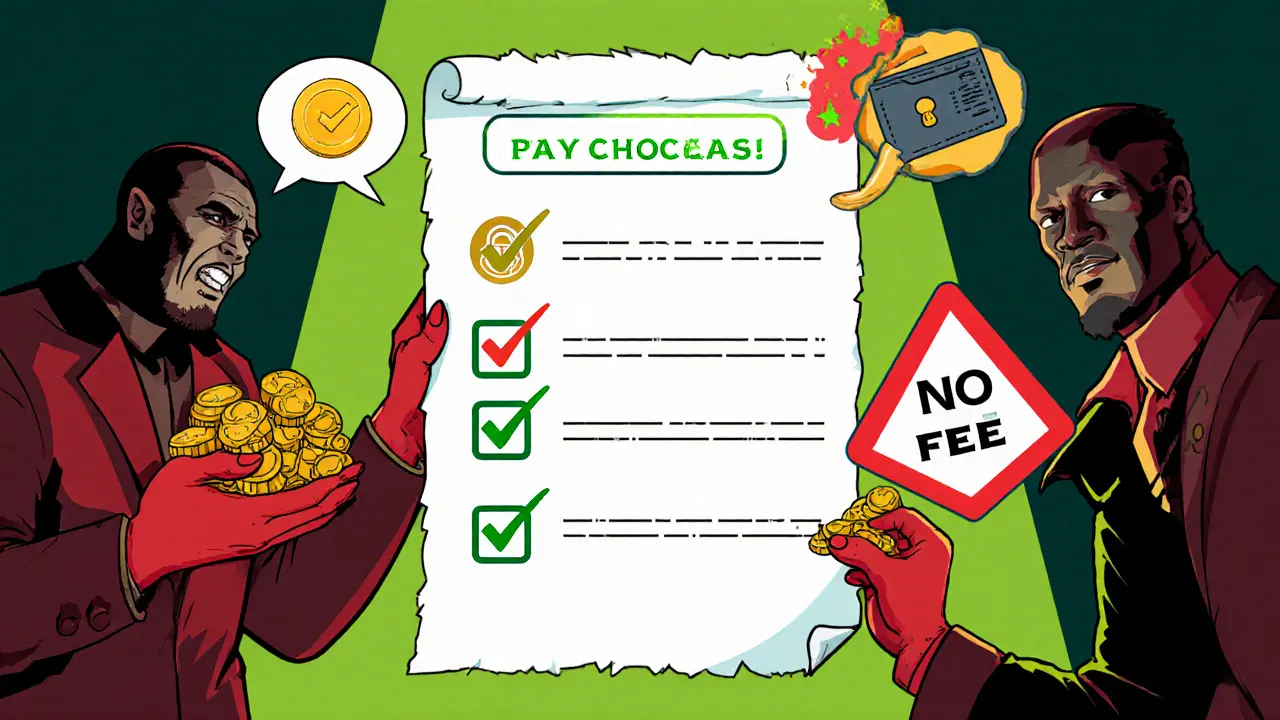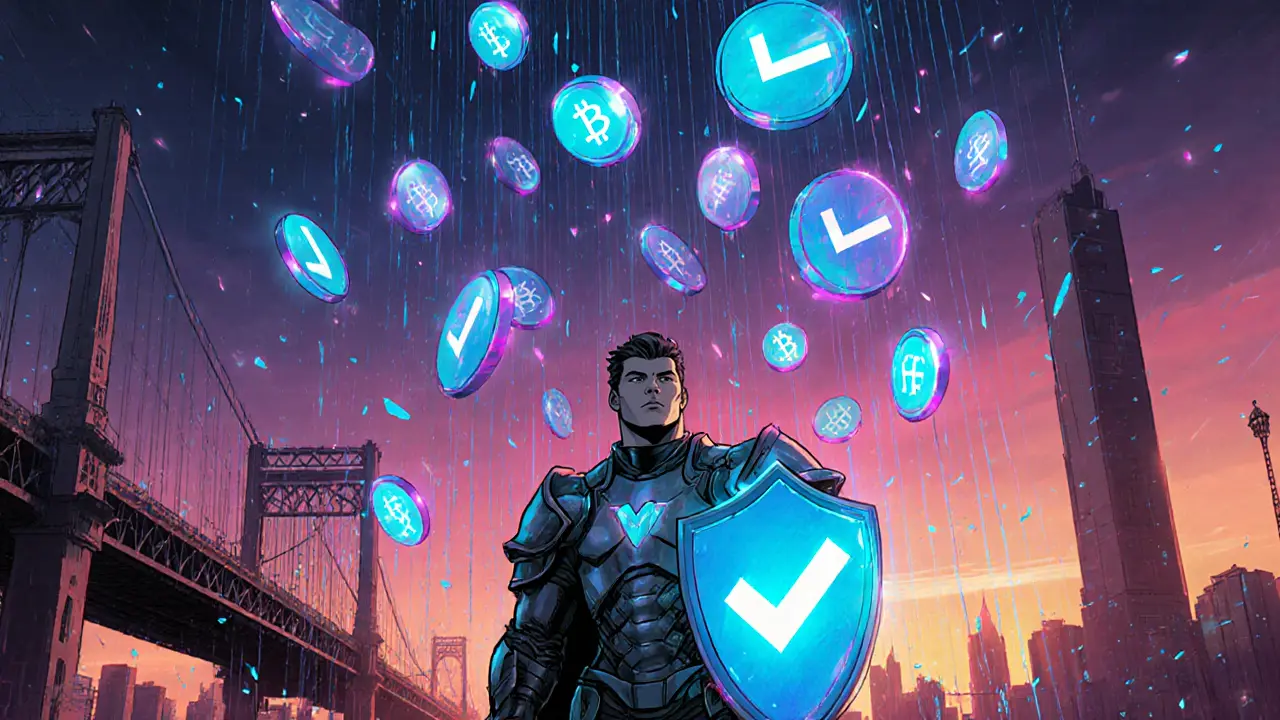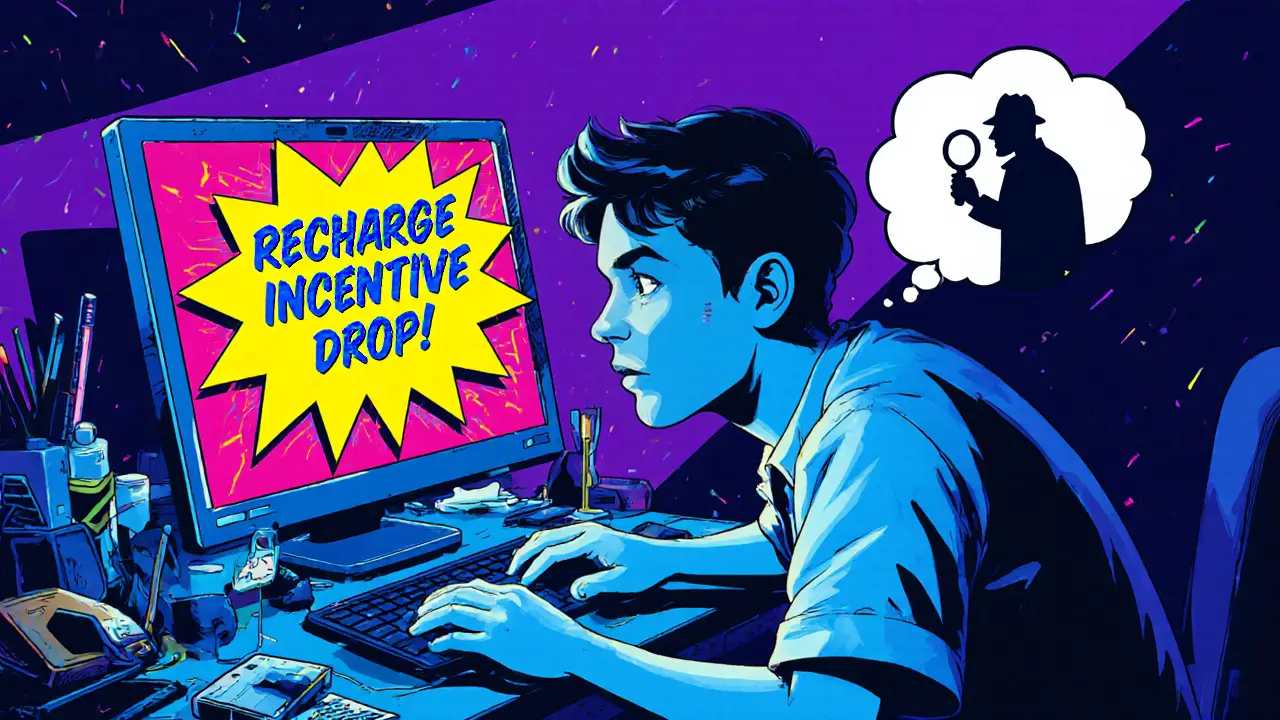Airdrop Safety Checker
Evaluate an Airdrop Opportunity
Enter details about the airdrop below to get a safety assessment.
Safety Assessment
Enter airdrop details and click "Check Airdrop Safety" to see the evaluation.
When you stumble across a headline about the Recharge Incentive Drop airdrop, the first reaction is usually excitement mixed with a dash of skepticism. Is it a legit token giveaway that could boost your portfolio, or just another clever scam lurking in the crypto wilderness? This article breaks down everything you need to know about this mysterious airdrop, explains the broader world of crypto airdrops, and gives you a practical checklist to stay safe while hunting for free tokens.
What the "Recharge Incentive Drop" Actually Is (and Why Info Is Sparse)
The Recharge Incentive Drop is a purported cryptocurrency token distribution that has surfaced on a handful of social‑media posts and unofficial community channels. No major blockchain explorer, reputable news outlet, or established airdrop aggregator lists concrete details such as the project’s name, token contract address, snapshot date, or eligibility criteria. This lack of verifiable data can mean three things:
- The airdrop is brand new and still under the radar of mainstream tracking tools.
- The distribution is private, targeting a limited group of early supporters.
- It could be a fraudulent scheme designed to harvest wallet addresses and personal data.
Before you even think about signing up, treat the Recharge Incentive Drop as you would any unfamiliar crypto opportunity: verify every claim through official channels, check the smart‑contract code, and be wary of demands for private keys or upfront payments.
How Crypto Airdrops Work
An airdrop is a marketing mechanic used by blockchain projects to distribute free tokens to a target audience. The core idea is simple: reward early adopters, generate buzz, and seed liquidity. The process usually follows four steps:
- Project announces the airdrop, outlining eligibility and required actions.
- Participants register their wallet address and complete any stipulated tasks.
- The team validates the submissions against on‑chain data or off‑chain verification.
- Tokens are transferred to qualified wallets, often automatically via a smart contract.
While the mechanics are straightforward, the variety of airdrop models can be confusing. Below is a quick guide to the most common types.
Comparison of Airdrop Types
| Type | Typical Requirements | Risk Level | Potential Reward |
|---|---|---|---|
| Task‑Based (Bounty) | Social media shares, joining Telegram/Discord, newsletter sign‑up | Low - no on‑chain interaction needed | Modest - usually a few hundred tokens |
| Holder‑Based | Own specific tokens at snapshot (e.g., ETH, USDC) | Low - just holding | Variable - depends on holdings size |
| Interaction‑Based | Swap, bridge, or trade on the platform | Medium - gas fees and smart‑contract risk | Higher - often thousands of tokens |
| Staking‑Based | Lock tokens in a liquidity pool or staking contract | Medium‑High - capital at risk | High - rewards can be proportional to stake |
| Exclusive/Retroactive | Early developers, beta testers, or first‑users | Medium - may require proof of early activity | Very High - Uniswap’s 400+ UNI example |
Historic Success Stories (And What They Teach Us)
Studying past airdrops helps you spot patterns that separate genuine opportunities from hype. Two classic cases illustrate why airdrops matter:
- Uniswap gave every wallet that had ever interacted with the protocol at least 400 UNI tokens. Early participants saw millions of dollars in value as UNI’s price surged.
- The Ethereum Name Service (ENS) airdrop rewarded .eth domain holders, catalyzing wider adoption of decentralized identities.
Both examples share three traits: clear eligibility rules, distribution via a verified smart contract, and a strong community backing the project. If an airdrop you’re eyeing lacks these ingredients, proceed with caution.

Why Layer‑2 Projects Are Airdrop Hotspots in 2025
Layer‑2 solutions like Arbitrum, Optimism, and zkSync have become fertile ground for token giveaways. These protocols incentivize users to bridge assets, test new roll‑up bridges, or vote on governance proposals. The reward calculus is straightforward: the more you interact with the network before the airdrop snapshot, the larger your share.
However, as the reward pools grow, so do the scams. Fake “Arbitrum airdrop” bots often ask for private keys or a small ETH deposit to “verify” eligibility. Never share private keys, and always check the official GitHub or Discord for the real distribution contract.
Red Flags: Spotting Airdrop Scams
Scam operators rely on urgency and mystery. Here’s a quick checklist to filter out the noise:
- Anonymous Announcement - No verified Twitter, Discord, or website.
- Up‑front Payments - Any request for ETH, BNB, or other tokens as a “fee”.
- Private Key Requests - Legitimate airdrops never need your private key.
- Unverifiable Smart Contract - Contract not audited or not posted on a block explorer.
- Too‑Good‑to‑Be‑True Rewards - Promises of thousands of dollars for a single tweet.
If any of these appear, walk away. Remember: a legitimate project’s goal is to gain users, not to steal them.
Step‑by‑Step Guide to Safely Participate in an Airdrop
- Identify the official communication channel (Twitter/X, Discord, Medium). Verify the account’s badge or community reputation.
- Read the official airdrop announcement in full. Note the snapshot date, required tasks, and token contract address.
- Set up a dedicated wallet (e.g., MetaMask, Trust Wallet). Keep this wallet’s private key offline.
- Complete the tasks -‑ whether it’s joining a Telegram group, bridging assets, or holding a certain token.
- Double‑check the smart‑contract address on Etherscan or the chain’s explorer. Look for audit reports if available.
- Wait for the distribution. Tokens will appear automatically; do not click “claim” links that ask for private keys.
- After receipt, decide on a strategy: hold for potential upside, or sell immediately to lock in value. Use reputable exchanges.
Applying this process to the Recharge Incentive Drop will help you avoid the most common pitfalls.
What to Do If You’ve Already Sent Funds or Private Keys
Unfortunately, many users discover they’ve fallen for a scam only after the funds have moved. Here’s a practical approach:
- Check the transaction on the blockchain explorer. If it’s a simple transfer, you cannot reverse it.
- Report the address to the platform (e.g., Twitter/X, Discord) and to sites like EtherscamDB.
- Contact your wallet provider for guidance; some may offer address‑blocking features.
- Consider filing a police report if a significant amount is involved.
While recovery is rare, documenting the incident helps protect the wider community.
Future Outlook: Airdrop Opportunities in 2025‑2026
Testnet participation is the next frontier. Projects such as Sui, Aptos, and Scroll reward early users who stress‑test their networks. These rewards are often distributed as governance tokens once the mainnet launches. Keep an eye on official testnet bounty pages and GitHub repos; the first‑mover advantage can be sizable.
In short, the crypto airdrop ecosystem is evolving fast. Whether the Recharge Incentive Drop turns out to be a genuine giveaway or a red‑flag scam, the same safety principles apply.

Frequently Asked Questions
Is the Recharge Incentive Drop a real airdrop?
There is no verifiable information from reputable sources confirming the existence of the Recharge Incentive Drop. Until the project publishes an official website, verified social channels, and a transparent token contract, treat it as unverified and proceed with caution.
What are the safest types of airdrops to join?
Task‑based and holder‑based airdrops are generally the safest because they require no on‑chain transactions that consume gas or expose you to contract bugs. Always verify the contract address before interacting.
How can I verify a token contract?
Look up the contract on a block explorer (Etherscan, BscScan, etc.). Check if the address is listed on the project’s official site and whether an audit report exists. Community forums often discuss suspicious contracts.
Should I claim an airdrop that asks for a small fee?
No. Legitimate airdrops never require payment to receive tokens. Any fee request is a classic sign of a scam.
What’s the best strategy after receiving an airdrop?
It depends on your risk tolerance. Holding can yield large upside if the project succeeds, while immediate sale locks in value and avoids volatility. Many users split the allocation: part hold, part sell.





Dale Breithaupt
March 14 2025Great overview, the checklist is super useful for anyone eyeing airdrops.
Rasean Bryant
March 18 2025Thanks for the heads‑up! Following these steps will definitely keep our wallets safe.
Reid Priddy
March 22 2025Honestly, most of these so‑called safety guides are just smoke‑and‑mirrors; the real risk is the data they harvest, not the token itself.
Shamalama Dee
March 25 2025I see where you’re coming from, Reid, but a verified contract and community backing still provide a baseline of trust.
scott bell
March 29 2025Picture this - a shiny token promise lands in your DMs, you click, and boom- you’re drenched in regret.
vincent gaytano
April 2 2025Right, because trusting a random Discord link has never backfired on anyone.
Dyeshanae Navarro
April 6 2025Use a separate wallet for airdrops; keep your main assets safe.
Matt Potter
April 9 2025Exactly, stay bold! The biggest gains come to those who act fast.
Marli Ramos
April 13 2025Looks solid 😎
Christina Lombardi-Somaschini
April 17 2025While the sentiment expressed is commendable, one must also consider the underlying protocol specifications prior to participation.
katie sears
April 21 2025The procedural guidelines delineated herein are indeed comprehensive, yet an emphasis on verification of source authenticity remains paramount.
Gaurav Joshi
April 24 2025Totally, double‑check the Twitter badge and the contract on Etherscan before you jump.
Kathryn Moore
April 28 2025Nice summary.
Christine Wray
May 2 2025I agree; the blend of caution and optimism makes for a sensible approach to airdrop hunting.
roshan nair
May 5 2025Yo fam, if the token contract looks like a spaghetti mess, run like a cheetah!
Jay K
May 9 2025Indeed, the presence of an unaudited contract constitutes a material risk factor that should preclude participation.
Kimberly M
May 13 2025Thanks for the tips! 🙏
Navneet kaur
May 17 2025But aren't you all just scared of missing out on the next big moonshot? Maybe step out of the safety bubble.
Marketta Hawkins
May 20 2025Apparently some people think reading a checklist makes them invincible, but reality checks keep happening.
Drizzy Drake
May 24 2025I totally get the excitement that comes with a fresh airdrop announcement, especially when the crypto community is buzzing with hype.
However, diving in without a solid safety net is like skydiving without checking your parachute.
First, always verify the project's official channels; a blue‑check badge on Twitter or a verified Discord server can save you a lot of trouble.
Second, scrutinize the token contract on the appropriate block explorer, looking for audit reports and source code transparency.
Third, never, ever hand over your private keys, no matter how convincing the offer sounds.
If a site asks for a small ETH fee to "unlock" the airdrop, consider it a red flag screaming for your funds.
Remember that legitimate projects tend to distribute tokens automatically via a smart contract without requiring a claim link that asks for credentials.
Keeping a dedicated, empty wallet solely for airdrop participation can further isolate any potential loss from your main holdings.
After you receive the tokens, take a moment to assess the market sentiment before deciding to hold or sell.
Selling immediately locks in any upside and eliminates exposure to future volatility.
Holding, on the other hand, can yield massive returns if the project gains traction, but it also ties up capital.
Diversifying your approach-selling a portion and holding the rest-often strikes a good balance.
Lastly, stay updated with community channels for any post‑distribution announcements or potential token swaps.
Security is a continuous process, not a one‑time checklist.
By staying vigilant and methodical, you greatly increase your chances of walking away with a legit token instead of a scam.
AJAY KUMAR
May 28 2025The airdrop frenzy is the modern gold rush, and only the bold survive!
bob newman
June 1 2025Sure, because every random token drop is a golden ticket, right?
Anil Paudyal
June 4 2025Stick to proven projects.
Kimberly Gilliam
June 8 2025Another airdrop article, same old advice.